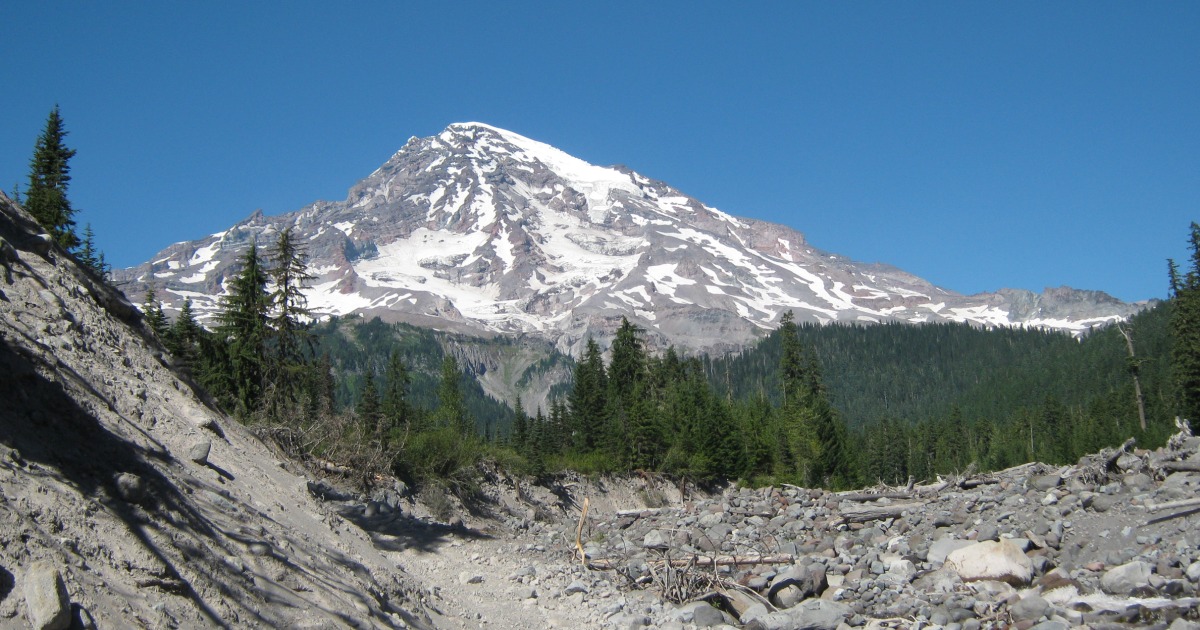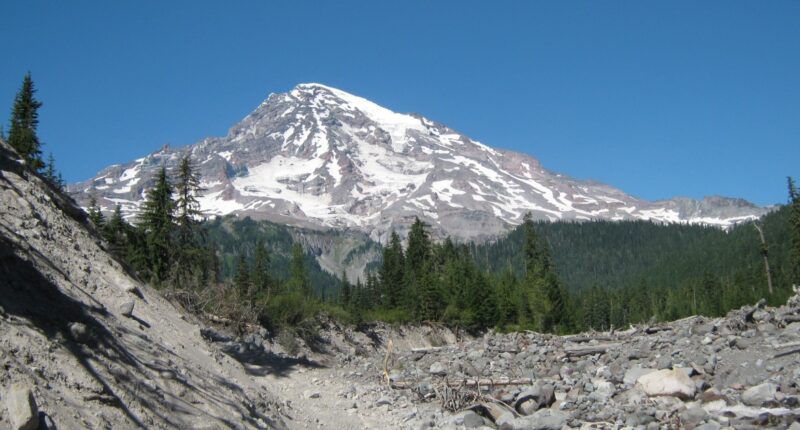
Declines in the ice stored around Rainier’s cap could reduce habitat for fish like bull trout, which the U.S. Fish & Wildlife Service categorizes as a threatened species. The retreat of glaciers has already caused structures at Camp Muir, a camp for climbers, to shift slightly as the ground destabilizes, Beason said. Further declines could cause more debris flows and landslides as the retreat of glaciers reshapes the park’s landscape.
“It’s going to turn into a darker-looking mountain,” Beason said. “Everything is going to look different in the next century because of this. It will be interesting to see how we adapt.”
Mountain glaciers are a water source for nearly 2 billion people. A study published this year in the journal Science predicts mountain glaciers will lose 26% to 41% percent of their mass, as measured in 2015, by the end of this century depending on how much more the Earth warms.
Mount Rainier is the most glaciated peak in the lower 48 states, and its slopes contain more ice than all of the glaciers that blanket the rest of the peaks in Cascade Range mountains combined, Beason said.
The mountain’s summit is about 60 miles from Seattle, and it dominates the city’s skyline on clear days. It draws more than 2 million visitors every year. For much of the year, its glaciers are blanketed in fresh snow. Glacier ice is exposed in the summer as the snow melts away.
The park’s glaciers — defined as moving bodies of ice that persist — have been mapped for 125 years, with a first inventory completed in 1896, according to the report on Mount Rainier’s glaciers, which summarized centuries of research on the extent of glaciers in the national park.
The report, which listed 28 glaciers for 2021, found their mass decreased by nearly 52% since 1896. The area of Mount Rainier covered by glaciers fell from nearly 50 square miles to just more than 29 square miles — a nearly 42% decline.
The National Park Service officially removed the Stevens Glacier from its inventory because it had grown too small and there was a lack of evidence that ice was flowing, such as crevassing.
The report said two other glaciers — the Pyramid and Van Trump glaciers — lost 34% and 43% of their volume from 2015 to 2021. Park researchers concluded they were “in serious peril.”
Source: | This article originally belongs to Nbcnews.com










